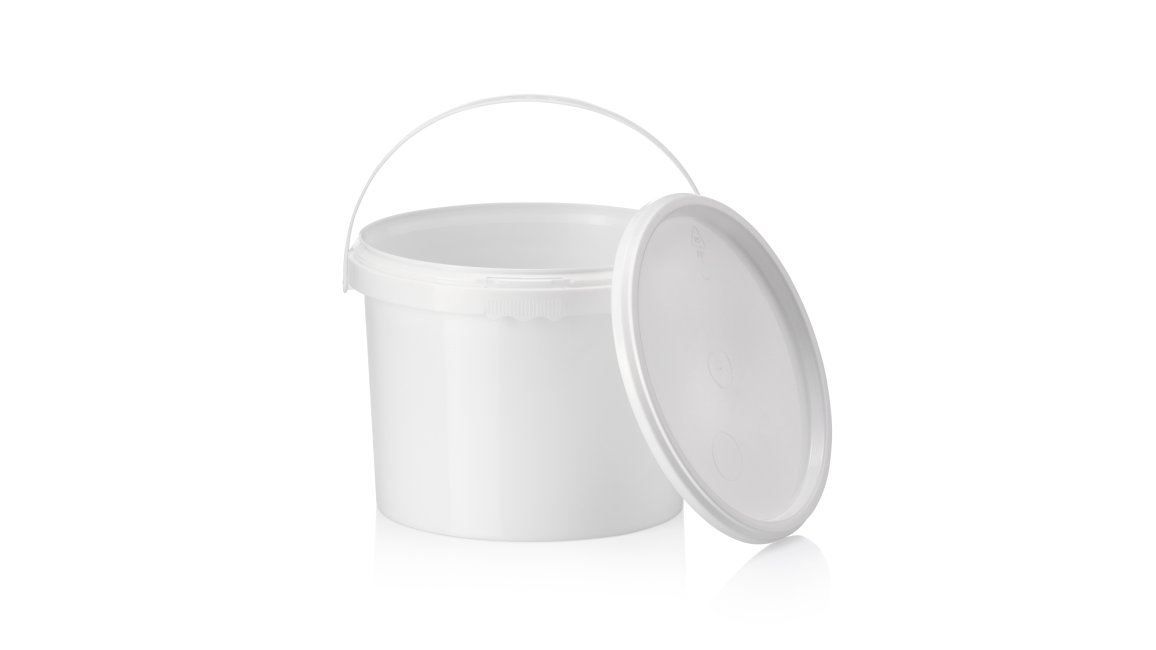Paint buckets protect against mould
The right packaging can extend the shelf life of water-based paints and varnishes. ALPLAindustrial has proven this in the ‘InCanPres’ research project.
Water-based paints and varnishes are better for people and the environment. However, they are susceptible to germs. Without preservatives, mould, algae, fungi and pathogens can spread. Biocides provide a remedy – but for how much longer is unclear. In the EU, the Biocidal Products Regulation (BPR) restricts the development and use of active substances and reduces the permissible content of biocides. This has consequences for shelf life and storage. More spoiled goods in turn harm the environment – and counteract the regulatory measures. Manufacturers of paints, varnishes and wood coatings must therefore look for alternatives.

Packaging plays a key role in protecting the product. As a specialist in paint and varnish buckets, ALPLAindustrial, in collaboration with other partners, contributed its expertise to the ‘InCanPres’ research project run by ecoplus, OFI (Austrian Research and Testing Institute) and MCI (Management Center Innsbruck). From 2021 to 2024, the pioneering project focused on the development of antimicrobial packaging and seals, faster and more cost-efficient analysis methods, new biocide formulations and innovative sterilisation technologies. Together with Gabriel-Chemie Masterbatch and Murexin, ALPLAindustrial set out to develop a preservative packaging solution – with success.
Protection thanks to a special ingredient
Together, they produced buckets and lids with active properties. The innovative incorporation of an antimicrobial additive into the highly concentrated masterbatch improves product quality in the event of microbial contamination – a new functional effect. Small amounts of the active ingredient migrate from the packaging into the paint, where it physically destroys the cell structure of germs. This works not only through direct contact, but also via the condensation that collects on the lid. This condensation accumulates the active ingredient, drips onto the paint surface and combats microbes and mould spores there. ‘The active ingredient has already been approved but has never been used as an additive for plastics,’ explains Christian Rupp, Quality Manager at ALPLAindustrial.
What sounds feasible in theory must also work in practice. The additive is mixed into the plastic via the masterbatch, pressed into shape and should then remain effective for months – a technical challenge. ALPLAindustrial has worked with Gabriel-Chemie to produce buckets and lids with the special material formulation. Coloured models are just as feasible as white ones. ‘We produced several prototypes with different masterbatch dosages and analysed them in the laboratory over extended periods of time. The results confirmed our expectations. The packaging effectively reduces bacteria,’ summarises Rupp. The innovation is achieved through the material. The tool and process remain unchanged. ALPLAindustrial can therefore start series production quickly.
More information: www.alplaindustrial.com
Do you like our texts? Perhaps even so much that you want to use them in your own media? Then please get in touch with us beforehand!
